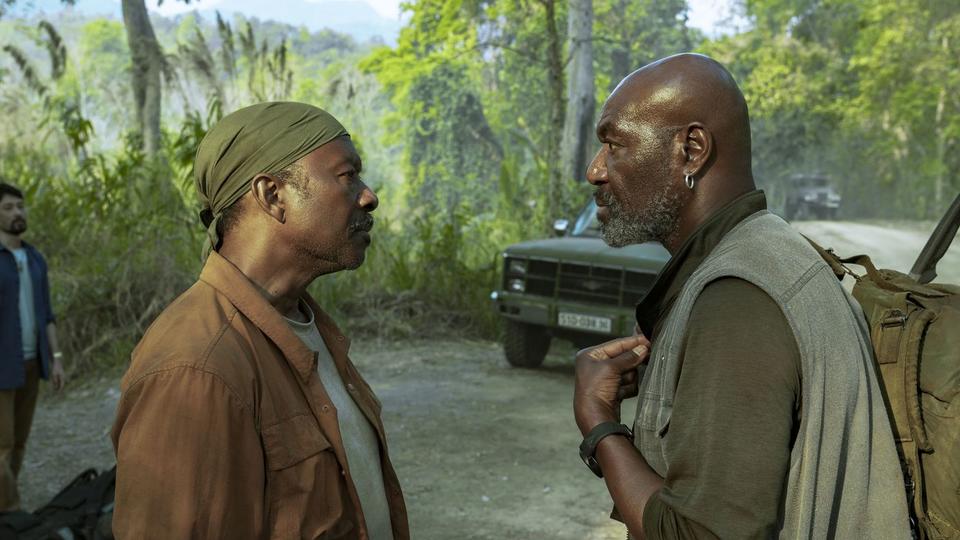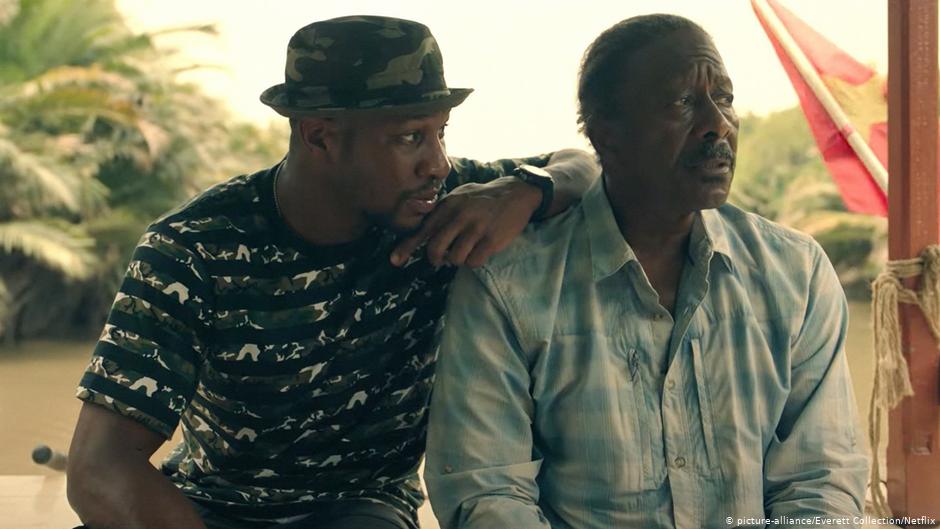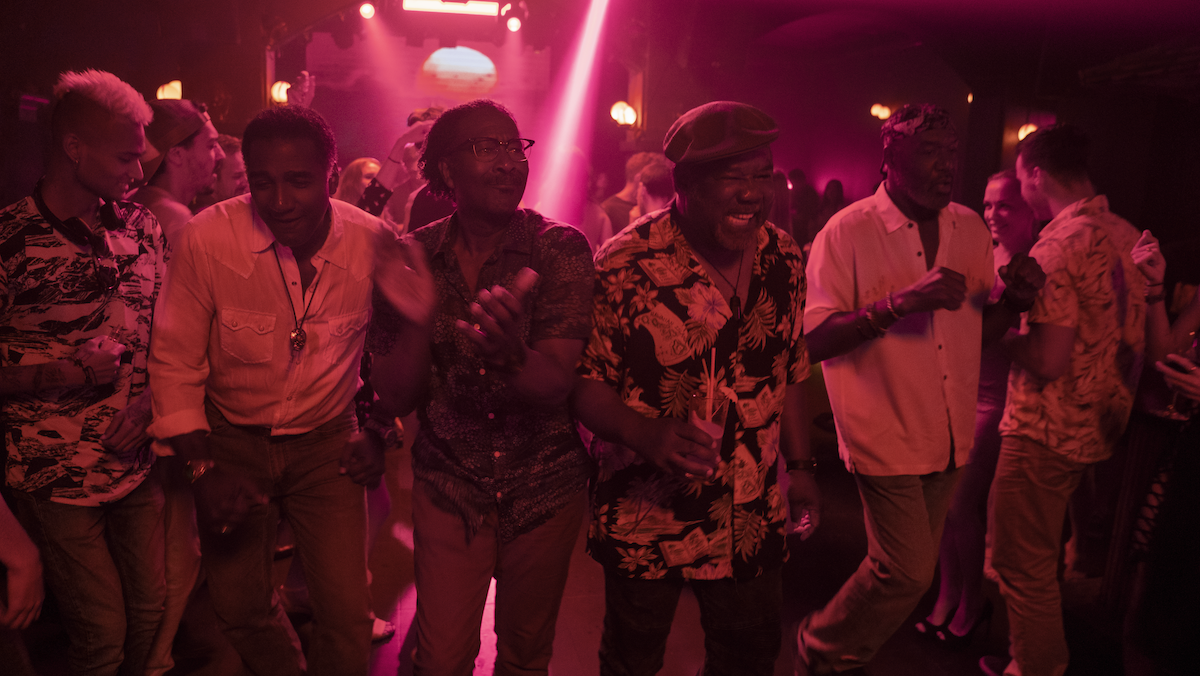Watching a Spike Lee movie is a bit like being hit by a wall of information, should such a thing exist outside the realm of metaphor. Some of it sticks, some of it continues on its way toward its next opportunity to do so; some of it will never stick. This disjointed quality is present even in his best films. When the films are more good than great, there’s more stray information searching for a home, though the experience overall is still intellectually and artistically gratifying.
This is the case with Da 5 Bloods, a contemplation of the African-American experience in the Vietnam War, which certainly feels timely given the metaphorical war in the streets of America today. Then again, the sad truth about Lee’s films is that they feel timely whenever they come out, as the racial disharmony he examines is a constant undercurrent in American society.
Over the course of 155 minutes, Lee’s first feature film for Netflix looks at a number of legacies related to America’s intervention in the fight between north and south that tore apart Vietnam in the 1960s and 1970s. The conflict sent more than 58,000 American soldiers to their graves – and possibly as many as three million Vietnamese. One is the legacy America left on the country, as scenes set in present day depict the bitterness some locals still feel toward American tourists. But then there is the legacy on African-Americans, who comprised just 11 percent of the U.S. population, but 32 percent of the boots on the ground in that war. Why, Lee justly wonders, did they do a disproportionate amount of the fighting and dying when their country was reluctant to extend them even the most basic civil rights, which the vast majority of their fellow citizens fully enjoyed?
The story is told through the eyes of four African-American veterans returning to the country for the first time in the 45 years since they left. The fifth “blood” referenced in the title, whom they called Stormin’ Norman (Chadwick Boseman), didn’t leave with them. He was killed in action and his body was never recovered. Finding his bones and returning them to the family is one motivation behind their return to the jungles that left them so traumatised. The less benevolent goal is to find a chest of gold bars they uncovered in combat and then buried, whose location wasn’t previously discoverable after the area was stripped of its vegetation by napalm.
Now, a mudslide appears to have revealed the location of the downed helicopter that served as another marker for their treasure. So Otis (Clarke Peters), Melvin (Isiah Whitlock Jr.), Eddie (Norm Lewis) and Paul (Delroy Lindo) – and crashing the party, Paul’s son David (Jonathan Majors) – return to try to find their booty, being posthumously guarded by their fallen fellow blood, like a skeletal pirate of yore. They liaise with a shady Frenchman (Jean Reno) and a helpful local guide (Johnny Nguyen) to navigate and try to do right by their friend, as well as reap the reparations for centuries of thankless service rendered to white Americans.
Thematically, Da 5 Bloods is reminiscent of … well, every film Lee has ever made. More specifically, it recalls his 2008 critical misfire The Miracle at St. Anna, which also followed four African-American soldiers stranded behind enemy lines, that time during World War II. So he’s followed his most critically acclaimed movie of the 21st century (BlacKkKlansman) with a reinterpretation of his least. Of course, more than an attempt to “get it right this time,” it’s probably an indication that these thoughts on the experience of being a person of colour during wartime are still speaking to him. There’s even a bit of David O. Russell’s 1999 triumph Three Kings in the idea of soldiers trying to escape with a bounty of gold bars, and the similarity extends even to the title.
Formally, this is Lee’s wall of information approach in full effect. Da 5 Bloods begins with a melange of challenging images from the late 1960s and early 1970s, set to a solemn Terence Blanchard score – which continues a long-time partnership of more than a dozen Lee films. These images are everything from the incident at Kent State University where student protestors were killed, to images of dead Vietnamese babies, to the racial unrest from that period. Lee is nothing if not confrontational. He’s experimenting formally here as well, as he changes the aspect ratio of the picture from widescreen for the modern-day scenes to the more square appearance of his flashbacks to the war. The fact that the cast play themselves four-and-a-half decades earlier is an indication that emotional realism is more important to Lee than other forms. (The film was shot on location in Vietnam and Thailand.)
As indicated earlier, not everything Lee throws at us works. That there are four main characters gives us a chance to explore a number of different channels of how these men’s lives went since the war, whether impacted by their racial identities or not, though that also has the effect of making the focus more diffuse. Nor should we expect all of these characters to be mouthpieces for Lee, as Paul wears a MAGA hat and admits he voted for Trump – whom Otis refers to as “President Fake Bone Spurs.”
Because it’s two-and-a-half hours long and contains multiple points of entry, Da 5 Bloods can be a confounding watch. But it’s never less than fully engaging, and in fact, the time passes faster than it might. Lee’s assembled a cast of age-appropriate actors who are a mixture of Lee veterans (Lindo, Peters and Whitlock) and those appearing in their first Lee joint (Lewis and Majors). (Regular collaborator Samuel L. Jackson would have also been age appropriate, but best not to dwell on what he might have brought to this film.) Their chemistry as old friends is authentic and joyous, especially during one sequence where Lee’s camera backs up as it captures the four of them grooving forward, dancing their own individual dances to the Marvin Gaye record playing at a Saigon dance club called Apocalypse Now.
Truth be told, it doesn’t really matter if Lee’s thoughts are all fully formed, or whether he might have extracted some side material if he weren’t given the creative latitude afforded by Netflix. Every sequence he mounts has some value to it, and some are downright profound.
As has been his custom pretty much throughout his career, even in his historical films, Lee finds a way for this themes to come crashing into the present tense. He’s done so here by finishing on footage of Black Lives Matter organisers. As the whole world considers the #BLM truism right now, Lee makes it easy for us to understand why the lives of these particular black soldiers mattered.



